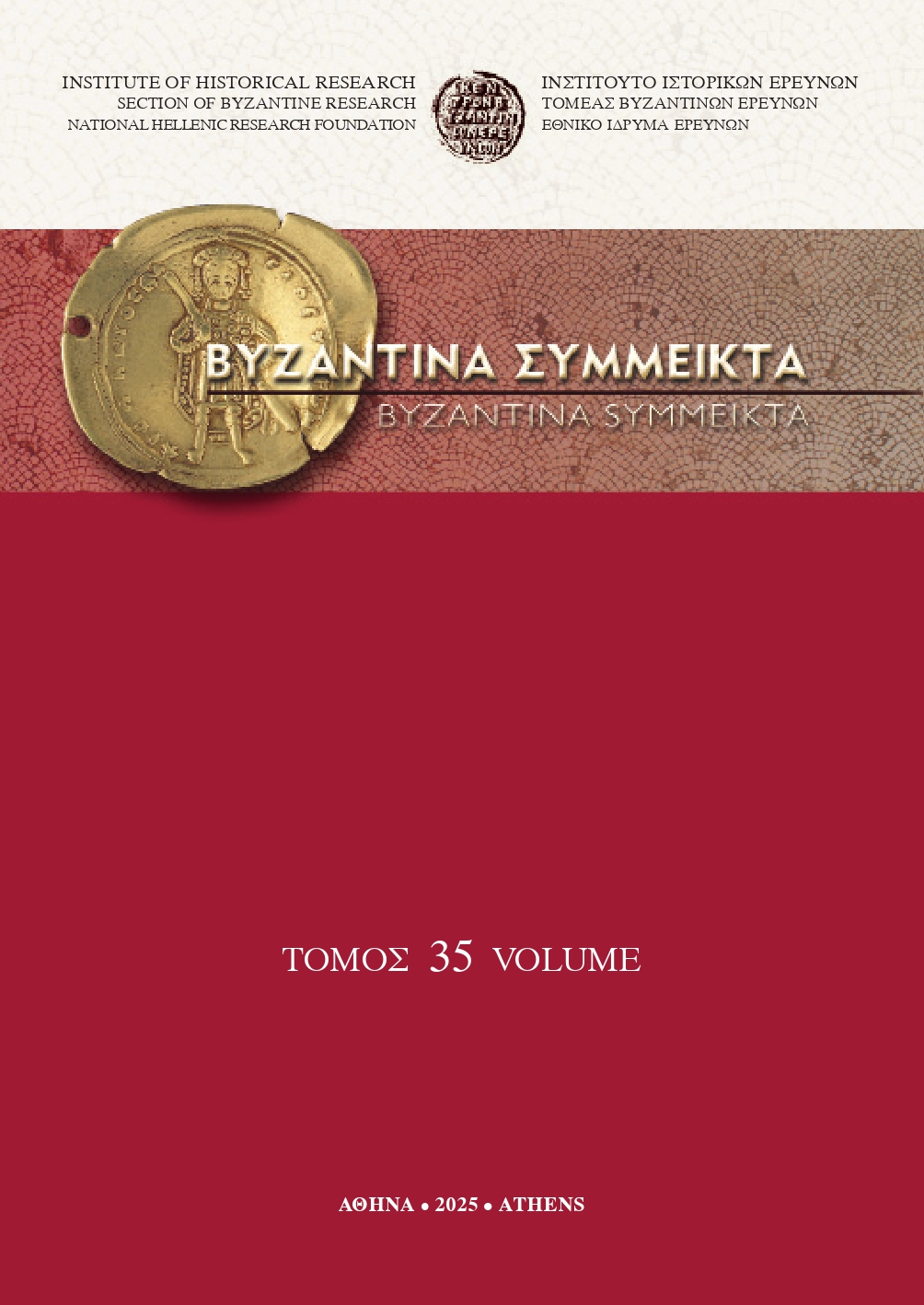Το Βυζάντιο ως ρωμαϊκό, ελληνικό και χριστιανικό
Abstract
Adequately discussing the Roman, Greek, and Christian aspects of Byzantium (how they were experienced by the Byzantines during a millennium, how other medieval civilizations and modernity perceived these qualities in Byzantine culture) would be a book-length project. A humble alternative is attempted here, in an effort to squeeze large topics within the confines of an article: a text foundational to the establishment of Byzantine studies as a modern academic discipline towards the end of the nineteenth century is used as a mirror of the field at that time, especially regarding a limited number of major and recurring topics in the modern historiography of Byzantium: its periodization, Roman self-identification, Christian identity, and relationship with the ancient Greek past. What is found there is compared with how twenty-first century scholarship approached the same questions. Some implications of the convergencies and differences for the present and future of the field are also drawn.
Article Details
- How to Cite
-
MAVROUDI, M. (2025). Το Βυζάντιο ως ρωμαϊκό, ελληνικό και χριστιανικό. Byzantina Symmeikta, 35, 239–284. https://doi.org/10.12681/byzsym.41746
- Issue
- BYZANTINA SYMMEIKTA 35
- Section
- Articles

This work is licensed under a Creative Commons Attribution-NonCommercial-ShareAlike 4.0 International License.
Copyright: The copyright for articles in this journal is retained by the author(s), with first publication rights granted to the journal. By virtue of their appearance in this open access journal, articles are free to use (with the exception of the non-granted right to make derivative works) with proper attribution for non-commercial uses (licence Creative Commons 4.0). NHRF retains the worldwide right to reproduce, display, distribute, and use articles published in BYZANTINA SYMMEIKTA in all formats and media, either separately or as part of collective works for the full term of copyright. This includes but is not limited to the right to publish articles in an issue of the Journal, copy and distribute individual reprints of the articles, authorize reproduction of articles in their entirety in another NHRF publication, and authorize reproduction and distribution of articles or abstracts thereof by means of computerized retrieval systems.



